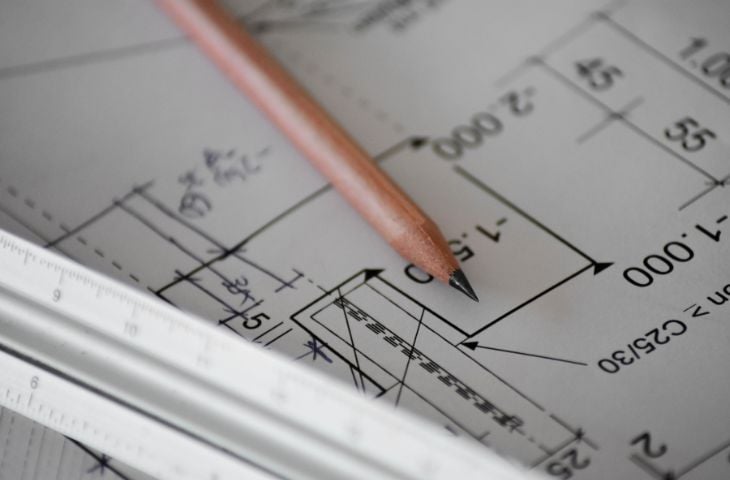
Digital Signage in Architecture | Rise Vision
The integration of digital signage software in the ever-evolving art of architecture is the embodiment of the fusion of functionality and aesthetics. Architectural digital signage can truly redefine how we see and experience public spaces.
From 3D billboards to immersive video walls, architects are embracing the endless possibilities that this technology brings. But what is architectural digital signage exactly and should you consider using it?
What Is Architectural Digital Signage?
Architectural digital signage, as the name suggests, is digital signage that is integrated into the architecture of a building. In most cases, this is done during the design and construction phases, rather than once the building has already been erected. Architects are embracing the emergence of new technologies in their field of work as they find ways to merge together the practicality of digital signage with the aesthetics of their designs. As a result, there are more and more modern, digitized buildings popping up in cities around the globe, with digital signage elements both on the exterior and in the interior.
Examples of Architectural Digital Signage
Digital signage in architecture can assume many shapes and forms. Perhaps the first thing that crosses people’s minds when they hear the words “architectural digital signage” is 3D signage (large digital billboards, usually on the sides of buildings, that produce a 3D effect when viewed from the right angle). However, this is far from the only example.
Video walls are another great instance of architectural signage. They are especially effective in indoor spaces, where they can create a highly immersive experience for visitors. Wayfinding digital signage can be another example.
However, architectural digital signage doesn’t have to be vertical, either. Many architects have started to incorporate floor signage in their designs. This is especially useful as a form of wayfinding digital signage in large, maze-like establishments such as furniture stores or airports.
Perhaps the most popular example of floor digital signage is the Cracking Glass Bridge in China. The tourist attraction, a giant glass-floor bridge hanging at almost 4,000 feet, features video displays along its footpath that produce the effect of breaking glass. Whether an ingenious adrenaline-inducing attraction or a cruel prank, the bridge is undeniably an innovative way of using digital signage in architecture.
Benefits of Using Digital Signage in Architecture

Architectural digital signage is becoming more popular by the day, especially in (and on) commercial buildings. But why is this the case? What are the benefits that digital signage in architecture brings? We can think of a few.
Better Integration
When a building is designed and constructed with pre-planned digital signs, their dimensions, and positions, the whole setup will look much smoother – like it really belongs there. Think of, for example, a video wall that is built into the actual wall and leveled with it. On the other hand, when digital signs are put up as an afterthought, they can stick out and be much less immersive.
Eco-Friendliness
Digital signage, as opposed to traditional, paper-based media and advertising, is better for the environment. That being said, it still consumes a lot of power, especially when it comes to large, building-mounted displays. This, however, can be offset with solar panels powering the signage, making the setup more eco-friendly than its outdated alternatives.
Aesthetics
Architecture, first and foremost, is a form of fine art. Its concern with aesthetics translates into modern times and the digital era. When planned right, digital signage can complement the architectural beauty of a building. Add compelling visuals to the mix, and digital signs will truly enhance the appearance of the whole structure.
Monetization
Advertising is one of the most common uses of digital signage in general, and architectural signage is no different. By displaying ads on digital signs, building managers can generate an additional stream of revenue. What’s more, depending on the type of establishment, digital signs can provide excellent targeting for advertisers. For instance, local tourist attractions will likely have an interest in promoting themselves on hotel digital signage or digital signage in transportation hubs.
Adaptability
Unlike paper-based billboards that need to be printed with every new visual, changing the imagery on digital signs is as easy as a couple of clicks in digital signage content management systems. So whether you want to display a different ad, create a slideshow, or change the visuals according to the season, time of day, or weather, you can do it in a couple of minutes and with no hassle. In other words, the options for making the practical and the aesthetic work together are endless.
Communication
As with any other form of digital signage, architectural signs can serve the practical purpose of improving communication, both internally and with visitors. For instance, built-in digital signs can be used for wayfinding, in conference rooms, waiting rooms, as emergency alerts, and so on. In other words, as long as there’s a message that needs to be communicated, digital signs can do it effectively.
Drawbacks of Architectural Digital Signage

Digital signage in architecture, as you’ve likely concluded by now, has a wide application and brings many potential benefits. But that is not to say that there are no drawbacks. If you’re on the fence about including digital signage in your next construction project, consider these potential obstacles:
- Once it’s there, it’s there – Once you’ve put up a digital sign that is completely integrated into the building, there’s not much you can do to move or remove it. In other words, architectural digital signage is a long-term commitment.
- Requires proper planning – Designing a building is an intricate process. Adding digital signage into the mix makes it that much more important to pay attention to the tiniest details in terms of positioning, power supply, dimensions, and more.
- Fixing and replacing the displays – As advanced as today’s tech is, it still has an expiration date. Your digital signs will invariably need to be repaired or replaced at some time in the future. In the case of architectural signs, this will require a little bit of demolition and renovation.
Set Up Digital Signage With Rise Vision
Whether you decide to go for architectural digital signage or the more traditional, mounted displays, you will need digital signage software to ensure everything runs smoothly behind the scenes. The right software solution will allow you to use the potential of your setup to the fullest, convey your messages clearly, and create compelling visuals that fit the rest of the building.
Get started with your digital signage setup with Rise Vision. Book a free demo to learn more or sign up for a free digital signage trial.
More From Our Blog
-

Screen Sharing for Workplace Collaboration | Rise Vision
Screen-sharing technology has transformed how teams communicate and work together in real-time, regardless of their location. It can make presentations more engaging, support remote work, and speed[…]
Read More -

How to Use PowerPoint for Digital Signage
To create stunning, attention-grabbing, and effective digital signage content, you need the help of content creation and presentation tools. One of the most popular is Microsoft PowerPoint, owing to[…]
Read More -

120 Digital Signage Content Ideas
So…. you decided you would invest in some digital signage software and you need some ideas for ways you can make it stand out. This article is your go-to source for the best digital signage content[…]
Read More
Keep Your Displays Interesting – Pick New Templates Every Week!
Every week, we send template recommendations that will make you look great and improve your audience experience. And the best part, they save up to 16 hours of content creation time every week!
12,300+ Organizations Trust Rise Vision, You Can Too
Schedule a Free Demo
You deserve the #1 all-in-one platform for digital signage, screen sharing, and emergency alerts.



































